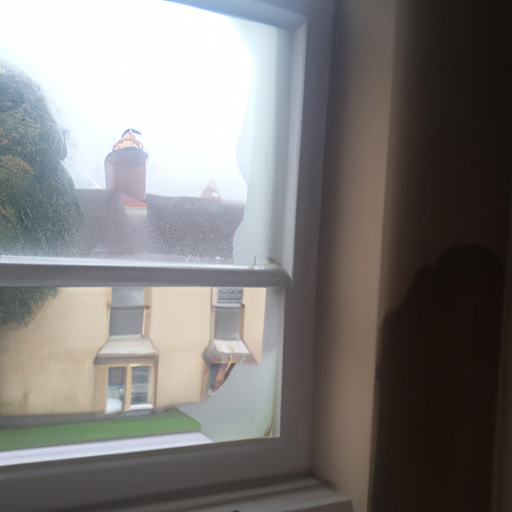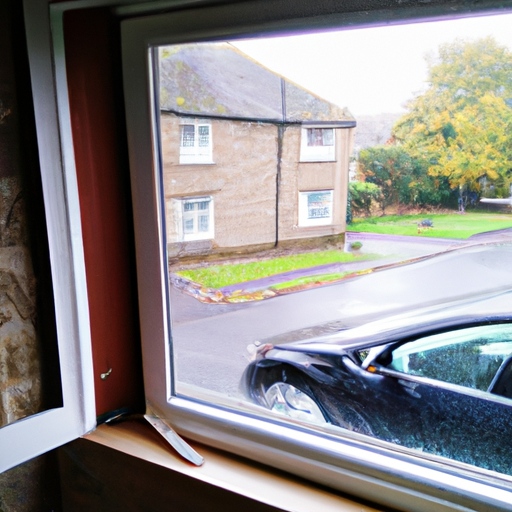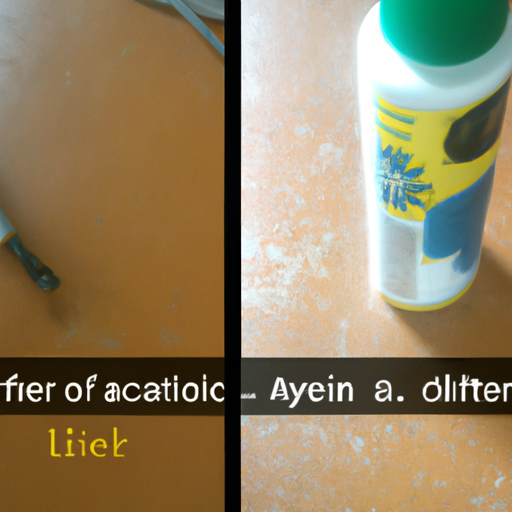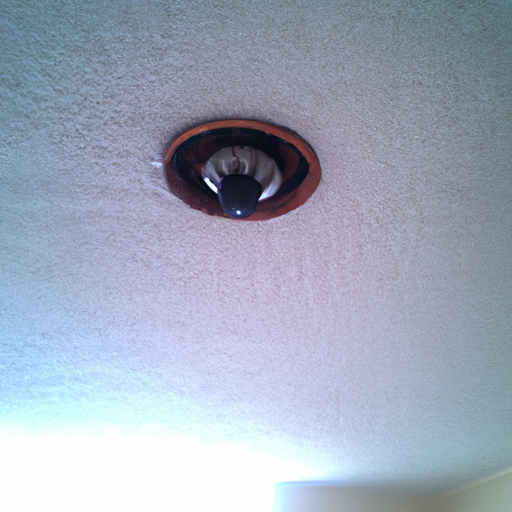
October Storm-Proofing: Window Care for Listed Yeovil Buildings
October usually brings a sharp change to Yeovil’s weather, and this year the autumn storms have a habit of turning corners with a bit of bite from the Atlantic. If you live in a listed building here in Yeovil, Somerset, keeping the windows in good nick isn’t just about looking tidy. It’s about safeguarding historic timber, putty joints, and delicate leaded panes from the damp, wind-driven rain that Somerset does so well. And yes, I’ve seen a few storms whip across Huish Park and the town centre that reminded me why it pays to plan before October weather really kicks in.
So, here’s a practical, neighbourly guide to October storm-proofing for listed windows, based on real jobs I’ve done in Yeovil and nearby towns like Montacute, Sherborne, and Crewkerne. I’ll mix in a bit of local flavour, safety reminders (we do love a proper risk assessment here in the UK), and some ideas you can act on this autumn. If you want more detailed background on historic window care, you can check out our related posts in the blog, or talk to our team through our window cleaning services in Yeovil.
Why October Storms Matter for Listed Windows in Yeovil
Listed buildings are precious, and many of Yeovil’s historic homes feature timber sashes, lime-putty glazing beads, and delicate glass that isn’t meant to shrug off a long wet season. The autumn wind can pry open cracked putty, loosen sash cords, or push moisture into frames that are already stressed from age. In practice, October storms can:
- Expose gaps in putty beads and glazing beads that let rain creep in and cause timber rot.
- Send wind-driven rain at higher velocity against sills and lintels, which can lead to damp and mould on sills and even water ingress in vulnerable panes.
- Challenge older coatings that used breathing oils and lime-wash finishes, making maintenance more important than ever.
In Yeovil, with the nearby hills and the Bristol Channel breeze sweeping through sometimes, you’ll notice a mix of misty mornings and heavy squalls. That means a proactive approach—not reactive panic—will save you money and preserve your windows’ historic character. And while you’re at it, this is also a good moment to cross-check the gutters and downpipes; blocked drainage is a frequent culprit for damp on older stone and timber frames.
If you’re curious about how other local historic properties have fared in storms, we’ve got a case study about restoring a listed manor house in Yeovil that shows the kinds of careful decisions these jobs require. It’s a good reminder that preserving historic windows is a mix of craft, safety, and a dash of local knowledge.
For a broader perspective on the topic, you might like to browse our blog to see how other Yeovil homeowners handle autumn-related issues, or read about post-storm window care in Somerset.
Our window cleaning services in Yeovil can tailor a plan for listed buildings, and our team is happy to discuss UK health and safety requirements that apply to at-height work.
Pre-Storm Checks for Listed Windows
Getting prepared starts long before the first big gust. A few simple checks now can stop tiny issues becoming expensive repairs later, especially for older frames. Here’s a practical checklist I use on-site around Yeovil:
- Inspect glazing putty and beads: look for cracks, loosening, or crumbly putty along the glass joints. Small cracks can widen quickly in a storm.
- Check timber sills and frames: look for signs of rot, cracking paint, or warped boards. Pay particular attention to northern or shaded elevations where damp tends to linger.
- Guttering and downpipes: ensure they’re clear of leaves and debris. Blocked water courses are a common cause of damp that affects historic windows.
- Weather stripping: if your sash windows use any external weather seals, check for gaps or compression that might have developed over the summer.
- Internal condensation risk: high humidity indoors, especially in rooms with poor ventilation, can worsen mould near historic windows after storms.
If you spot anything obvious, don’t panic. It’s often a matter of early spares-and-repairs rather than full restoration. And if you’re unsure, a local specialist with experience in listed buildings can assess without compromising your property’s character.
For neighbours in Sherborne, Crewkerne, or Ilminster who have similar historic houses, it’s the same story: a quick external inspection now saves you from bigger surprises once the rain starts to howl through October.
If you’d like practical guidance on inspecting historic windows without bringing in unnecessary risk, there’s a helpful overview in our blog: Preserving Historic Yeovil Windows: Practical Care Guide.
Cleaning and Maintenance in October: What to Do and What to Avoid
October rain can leave residue on the glass, especially if you’ve got old sash windows with decorative glazing bars. When cleaning historic panes, less is more. The goal is to remove dirt and contaminants without disturbing delicate putty or coatings.
- Use gentle, non-abrasive cleaners: a mild soap solution with a soft cloth or sponge works well. Avoid harsh solvents that can degrade historic sealants.
- Soft brushes for frames: a soft-bristled brush helps clear dust from mouldings without scratching timber.
- Rinse carefully: use a damp cloth to rinse gently and avoid forcing water into joints. A light hand with plenty of patience beats a quick but careless spray.
- Avoid high-pressure washers near historic features: pressure can strip putty, crack glass margins, or loosen fragile coatings. For tricky areas, we often recommend a controlled, hand-clean method rather than blasting.
- Be mindful of sealants and coatings: if your windows have breathable coatings or lime-based finishes, avoid sealants that seal moisture in rather than letting it escape.
If you’re dealing with water marks or stubborn staining after a storm, we’ve found that specific, targeted approaches work better than brute force. For fast fixes on water marks, you can check our post on water marks in Yeovil and Somerset: Water Marks on Windows in Yeovil: Fast Fixes.
On the subject of cleaning windows on historic homes, I’ve learned not to rush. A patient, thorough approach keeps the appearance authentic and avoids unnecessary wear. And if it all sounds like a bit much, there’s no harm in letting a Yeovil professional handle the sensitive parts while you concentrate on the rest of the house. If you want to see how we approach this for listed properties, take a look at our feature on preserving historic Yeovil windows for practical care ideas: Preserving Historic Yeovil Windows: Practical Care Guide.
In terms of modern conveniences, there are safer ways to protect historic glass during October’s wet weather. You might consider UV-resistant window films or nano coatings to reduce staining and weathering without altering the building’s external look. Our posts on UV-resistant window films in Yeovil and Protective window coatings in Yeovil offer interesting options to discuss with your cleaner or contractor.
Weatherproofing and Protection: October Solutions for Listed Windows
October’s wind and rain aren’t going away, so protecting the exterior of historic windows while preserving their essential character is a fine balance. Here are approaches that work well in Yeovil and the surrounding Somerset countryside, including nearby towns like Montacute and Somerton:
- Temporary interior shading or storm protection: while you shouldn’t alter the exterior appearance of a listed building, interior shutters or secondary glazing can dramatically improve comfort during storms without changing the facade.
- Breathable protective coatings: where you need to refresh external timber, choose breathable finishes that allow moisture to escape rather than trapping it inside. This keeps timber sound and reduces risk of rot.
- Consider exterior films with caution: UV-resistant films can offer protection from rain-spatter and grime while staying visually discreet, which is important for listed properties. See our notes on window films in Yeovil for context.
- Keep drainage clear: ensure any storm-water from roofs has a clear path away from sills and frames. A small amount of damp on a sill that dries quickly isn’t a big deal, but persistent damp is a problem.
- Avoid heavy hardware changes: for a listed home, any additions or modifications should be agreed with the relevant conservation officer and carried out by specialists who understand historic fabric.
Seasonally, using interior solutions in October can reduce weather exposure, especially on the more ornate Georgian or sash windows you’ll see around Yeovil’s historic streets. If you’re curious about the practicalities of glass protection, you’ll find more insights in our post about nano coatings and protective window films linked above.
For a local reference point, our post-storm window care guidance discusses how to protect windows in Somerset after high winds: Post-Storm Window Cleaning: Safe Yeovil Windows in Somerset.
And if you’re considering whether to protect with more permanent measures, remember this common-sense approach: avoid heavy external boards on a listed façade. Instead, lean on proven, reversible options like films or interior glazing where appropriate. The aim is to maintain historic integrity while improving resilience.
Local Knowledge: Yeovil, Nearby Towns, and Seasonal Quirks
Yeovil sits in a region where weather can swing quickly. The old town is punctuated by Victorian and early 20th-century facades, with Montacute House and the Montacute area not far away as a reminder that historic fabric is part of Somerset’s charm. In October, storms can sweep from the southwest and, depending on the day, bring misty dawns or heavy showers that cling to windows with older putty and timber. If your property sits near the town centre or along the A37 toward Sherborne or Crewkerne, you’ll notice the wind can feel particularly sharp along exposed elevations.
For readers in Ilminster, Martock, or Somerton, the same principles apply: the more protected your sills and joints are, the less moisture will work its way into the fabric. And if you have access issues or your property has complex glazing, you’ll likely benefit from a professional survey rather than trying to “sort it out” yourself on a windy Saturday.
If you want a break from the technical stuff and just want to read more about local historic homes, have a look at our feature on restoring a listed manor house here in Yeovil. It gives a real sense of the care and planning that historic work requires. Listed Manor House Restoration in Yeovil.
And if you’re thinking about autumn leaves and what they do to windows, our companion post on Autumn Leaf Removal From Windows and Sills in Yeovil is a quick read that helps you plan leaf-clearing duties so moisture doesn’t get trapped around frames: Autumn Leaf Removal From Windows and Sills in Yeovil.
Practical Costs and What to Expect When Working with a Yeovil Pro
I know many homeowners worry about costs and whether October is the right time to hire someone for listed-window work. Here’s the practical side, straight from the field:
- A focused inspection and minor repairs for a listed window can be reasonable in autumn, especially if you already have a plan for the winter. Expect a day or two of work if you’re dealing with multiple elevations and delicate glazing.
- If you need protective films or coatings, the costs can vary based on area, window type, and whether the work is interior or exterior. The key is to balance durability with the building’s historic appearance.
- If you’re considering professional cleaning or protection, you’ll usually get a clearer quote after a quick site visit. In Yeovil, many tradespeople offer an on-site assessment that respects the listing status and the local conservation guidelines.
For a sense of how long it takes and what it costs, you can compare our general long-form guides on Yeovil window care, including the seasonal maintenance plan we share in the blog. And if you want to review standard expectations, our post about annual window cleaning schedules can give you a ballpark for planning, even if your October project is bespoke: Plan Your Year: Best Annual Window Cleaning for Yeovil Homes.
If you’re exploring specific products like UV films or nano coatings, I’d suggest a quick chat with a local conservator or a window cleaner who knows historic fabric. For background, our articles on nano coatings and protective coatings can help you understand what’s feasible while keeping your listed windows authentic.
And because you’ll want to be able to show you’re serious about safety, remember that UK health and safety regulations come into play whenever there’s work at height or handling of old glazing. The Work at Height Regulations 2005, along with HSE guidance, emphasise planning, supervision, and competent personnel. If you’re not confident about ladders or access equipment, it’s sensible to hire a professional who can work safely and legally. Stay safe and compliant, Yeovil people.
Looking for quick safety tips? The blog has a good overview of staying safe during window cleaning work in Yeovil and Somerset, including practical safety checks you can perform on a Weekday Safety Schedule. Weekday Safety Checks for Yeovil Homes.
Safety, Regulations, and Real-World Practicalities
We’re fortunate in the South West to have a robust approach to maintenance on historic properties. In Yeovil, when you’re dealing with listed windows, compliance matters just as much as care. That means:
- A proper risk assessment is not optional. It’s a baseline for any work, especially when ladders or access equipment are involved.
- Work at height should be planned by a competent person, in line with the Work at Height Regulations 2005. This applies whether you’re cleaning, assessing, or making small repairs.
- For any work that involves altering external historic fabric, you’ll want permission from the local conservation officer and, ideally, a contractor who understands listed-building guidelines.
- If you’re hiring someone for cleaning or minor repairs, ask about their health and safety training, insurance, and whether they’ve done similar listed-building projects in Somerset.
If you want to see how a professional Yeovil team handles a historic site, our blog on “What to Expect From Professional Window Cleaners in Yeovil” offers a great refresher on standard practice that respects historic fabric: What to Expect From Professional Window Cleaners in Yeovil, Somerset.
FAQs
Q1: Should I board up windows during autumn storms on a listed building? A1: Not usually. Boarding up can alter the look and affect historic fabric. If protection is needed, discuss interior strategies or reversible external options with a conservator or a window specialist who understands listed buildings. In Yeovil, we often recommend interior shading or secondary glazing rather than external boards on a historic façade.
Q2: Can I clean the windows myself in autumn storms? A2: You can do light, careful cleaning, but avoid large-scale cleaning during high winds or damp conditions. Historic glazing and putty are delicate, and rushing can cause damage. If in doubt, a local professional who’s familiar with Yeovil’s older homes can do the job safely and effectively.
Q3: What should I look for when hiring a contractor for a listed building? A3: Prior experience with historic fabric, a clear safety plan, proof of insurance, and a willingness to work within conservation guidelines. Ask for examples of prior Yeovil projects and references. If you want to see how we handle historic properties, we’ve got a case study you can review: Listed Manor House Restoration in Yeovil.
Q4: Do autumn leaves affect windows and sills? A4: Yes. Wet leaves can trap moisture against sills, which is a common route for damp in older frames. Regular leaf clearance around October helps. If you’re interested, our Autumn Leaf Removal guide offers practical tips for Yeovil homes: Autumn Leaf Removal From Windows and Sills in Yeovil.
Q5: Are there safer, modern options to protect historic windows without changing their look? A5: Absolutely. UV-resistant films and breathable protective coatings can help reduce weathering and staining while preserving the exterior appearance. See our posts on window films and protective coatings for Yeovil homes, and chat with us about fit for your property.
A Gentle Nudge to Take Action
If you’re in Yeovil or the surrounding Somerset villages and you want a thoughtful plan for October storms, I’m happy to help. Our team can assess historic windows, suggest safe protective measures, and schedule cleaning or minor maintenance at a pace that works with listed-building constraints. The goal is to keep your windows looking true to their era while standing up to October weather.
You can reach us via our main page to discuss window care for listed buildings in Yeovil, or browse our blog for more technical insights and practical tips: the blog page.
If you’d like to see how we approach historic window care in practice, check out Preserving Historic Yeovil Windows: Practical Care Guide and the manor house restoration case study cited above. And for timely, storm-specific guidance, Post-Storm Window Cleaning: Safe Yeovil Windows in Somerset is a good read.
Remember: October in Somerset isn’t just about the rain. It’s about taking a measured approach to protect your historic windows, honour the building’s character, and keep your home secure through windy days. If you want a local expert to chat with, reach out and we’ll tailor a plan that respects the listing and keeps your windows looking their best through the autumn and beyond.
Why Choose Professional Window Cleaning in Yeovil, Somerset?
If you're looking for reliable window cleaning services in Yeovil, Somerset, we're here to help. Our experienced team provides professional window cleaning for homes and businesses throughout Somerset.
Ready to get sparkling clean windows? Contact us today for a free quote!
Related Articles
- Window care for holiday lets in Somerset – Yeovil and beyond
- Equipment Essentials for Yeovil Businesses: Window Cleaning Gear
- Chemical-Free Window Cleaning: Safe, Effective Methods in Yeovil
This article was written by Yeovil Window Cleaning Services, your local window cleaning experts serving Yeovil, Somerset and surrounding areas in Somerset.
Last updated: 7 October 2025
Need Professional Window Cleaning in Yeovil?
Get crystal clear windows with our professional cleaning service. We serve residential and commercial properties throughout Yeovil and surrounding areas.
Get a Free QuoteRelated Articles

November Back-to-School Window Care for Yeovil Flats
A neighbourly, practical guide to keeping windows in Yeovil flats sparkling through November. Local tips, safety-minded steps, and a seasonal plan for Somerset weather.

The Best Annual Window Cleaning Tips for Yeovil Homes
Ever wondered how to keep Yeovil windows sparkling year-round without the hassle? This neighbourly guide blends local weather, safety, and practical tips for Somerset homes.

Annual Safety Checks for Yeovil Homes: A Practical Guide
Living in Yeovil means you’ve got weather, ageing houses, and busy lives to juggle. Here’s a neighbourly, practical guide to the essential yearly safety checks every Yeovil home should schedule, with local tips and sensible costs.
